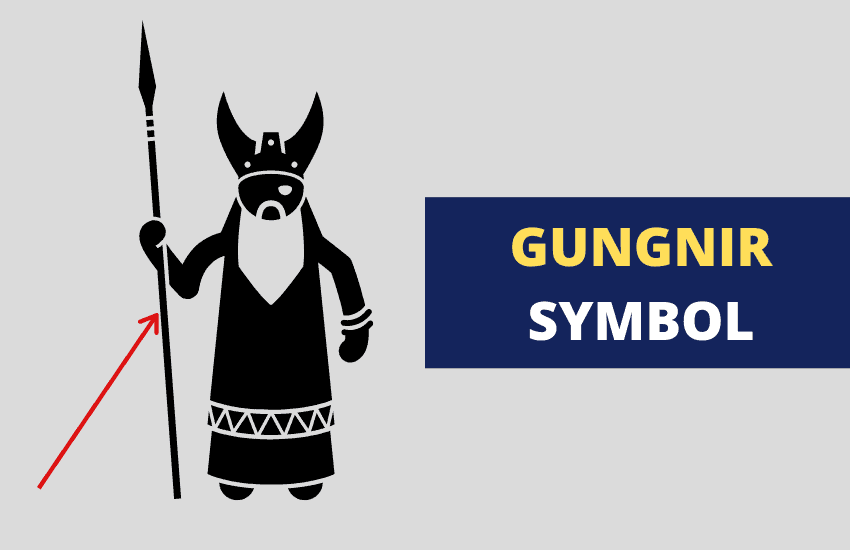
Table of Contents
Among the most powerful and important objects of Norse mythology, the Gungnir refers to Odin’s spear. The very word ‘gungnir’ means to tremble or to sway. Here’s a closer look at the Gungnir, and why it’s an important symbol.
What is Gungnir?
Known commonly as Odin’s Spear, the Gungnir also has several other names. These include: The Eternal Spear, Spear of Meteor, and The Swaying One. The latter is derived from the word’s possible relation to the word Gungre. This is a Danish verb that means to tremble. This perhaps alludes to how Odin used the weapon to effectively bring people into his sway or to strike fear into his enemies.
There are several stories about how Gungnir was created, but similar to other legendary weapons in Norse mythology, the Gungnir was believed to have been made by the group of dwarves, known as the Ivaldi brothers. Some accounts say it was forged from sunlight, others that it was made from the branches of the great tree Yggradrasil. The brothers had its point carved with magical runes, which explains why the spear was so deadly and accurate.
Many Nordic warriors imitated Gungnir, and had their spears carved with runes. Spears were among the most popular weapons used by Vikings, and it makes sense that Odin, as the Norse god of war, would carry a spear as his most important weapon.
The Gungnir was said to have flown across the sky whenever it was thrown by Odin with a brilliant flashing light, similar to lightning or a meteor. On a side note, some believe that this is where the origins of wishing upon a star or meteor come from.
How Did Odin Use Gungnir?
While not often depicted as a fighter himself, Odin is portrayed as using Gungnir on certain occasions.
- During the war between the Aesir and the Vanir. Odin hurled Gungir over his enemies before laying claim to the opposing army. This gesture served as the inspiration for the ancient Norse to first throw spears during conflicts as a means of offering opposing armies as gifts to Odin to guarantee their victory.
- Odin was the god of wisdom, and he valued and pursued knowledge. On one occasion, he sacrificed his eye to Mimir in exchange for wisdom. On another occasion, he hung himself on Yggdrasil and speared himself with Gungnir in his pursuit of knowledge of the ancient runes. This is associated with the Norse practice of making human sacrifices to Odin by way of spearing the person, hanging the person or sometimes, both spearing and hanging a person.
- During Ragnarok, the Norse apocalypse, Odin is portrayed as leading his army into battle, holding Gungnir. He uses his spear to fight with Fenrir, the giant wolf, but is defeated and killed, which results in the end of the world. Such is the power of Gungnir that the moment it fails, the entire world falls apart and the world as the Norse knew it ends.
Symbolism of Gungnir
During the Viking age, Odin was considered the chief of the gods. Therefore, Odin’s weapon, Gungnir, was highly revered as a representation of his authority, power and protection.
As mentioned above, Viking warriors would create their spears in imitation of Gungnir. It can be inferred that they believed that by doing so, their weapons too would possess the same accuracy and power of Gungnir.
Conclusion
Gungnir remains the most important of the Norse weapons, so much so that the fate of the world depended on it. It continues to symbolize the power and authority of Odin and is testament to the rich culture and symbolism of the Norse.








